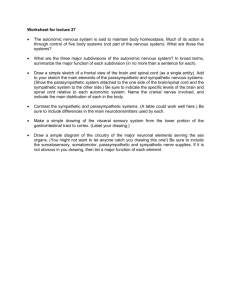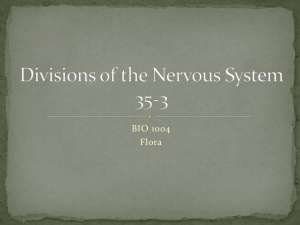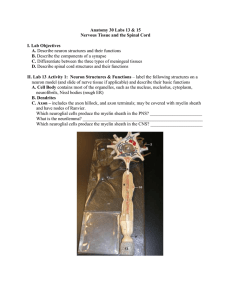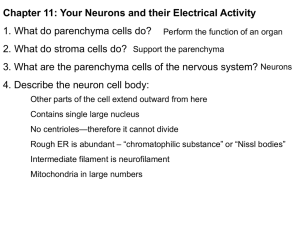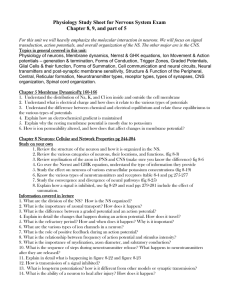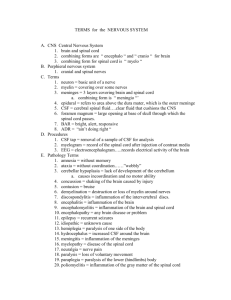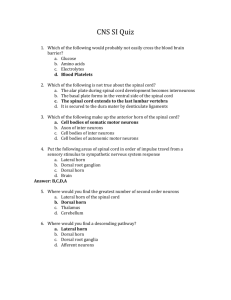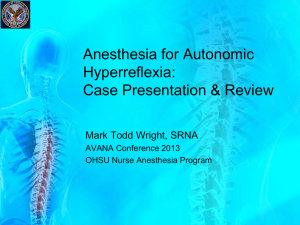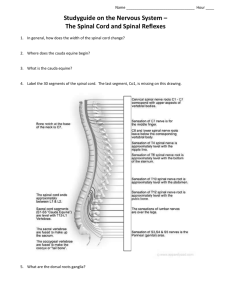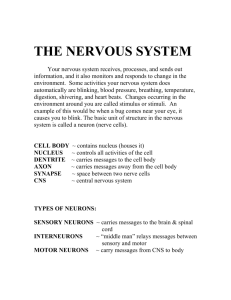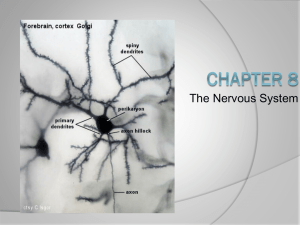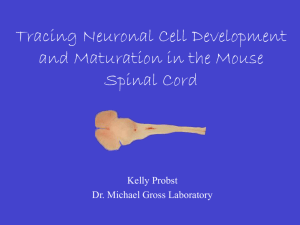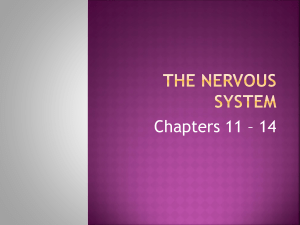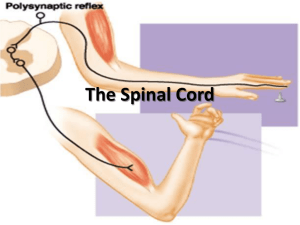Chapter 11: The Nervous System
advertisement
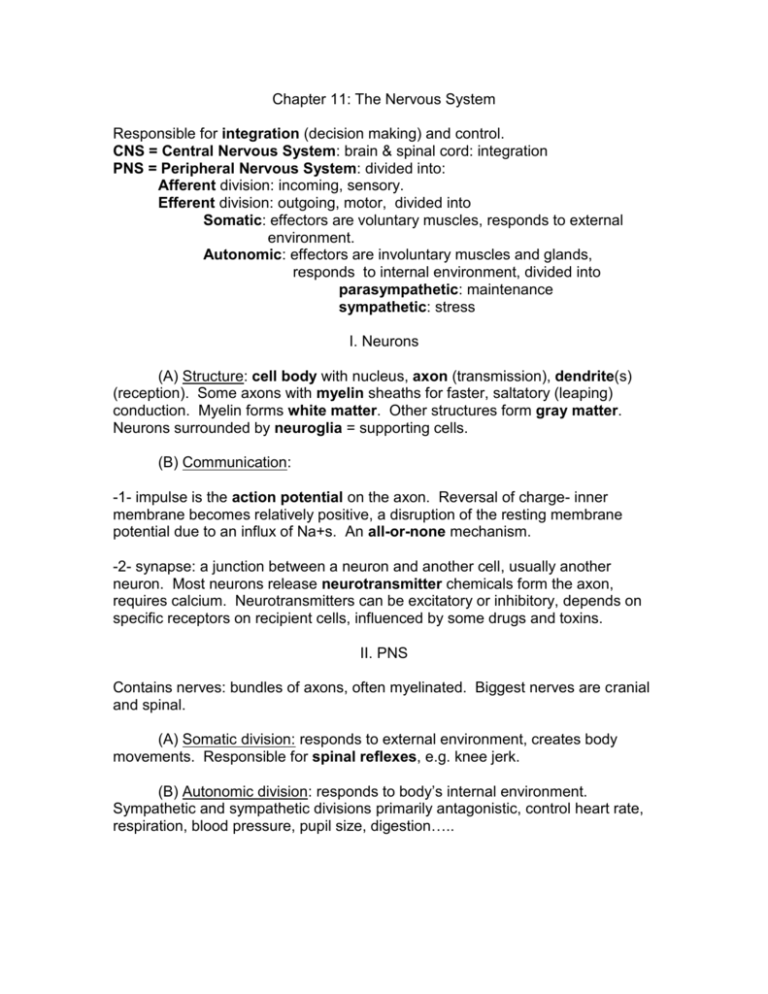
Chapter 11: The Nervous System Responsible for integration (decision making) and control. CNS = Central Nervous System: brain & spinal cord: integration PNS = Peripheral Nervous System: divided into: Afferent division: incoming, sensory. Efferent division: outgoing, motor, divided into Somatic: effectors are voluntary muscles, responds to external environment. Autonomic: effectors are involuntary muscles and glands, responds to internal environment, divided into parasympathetic: maintenance sympathetic: stress I. Neurons (A) Structure: cell body with nucleus, axon (transmission), dendrite(s) (reception). Some axons with myelin sheaths for faster, saltatory (leaping) conduction. Myelin forms white matter. Other structures form gray matter. Neurons surrounded by neuroglia = supporting cells. (B) Communication: -1- impulse is the action potential on the axon. Reversal of charge- inner membrane becomes relatively positive, a disruption of the resting membrane potential due to an influx of Na+s. An all-or-none mechanism. -2- synapse: a junction between a neuron and another cell, usually another neuron. Most neurons release neurotransmitter chemicals form the axon, requires calcium. Neurotransmitters can be excitatory or inhibitory, depends on specific receptors on recipient cells, influenced by some drugs and toxins. II. PNS Contains nerves: bundles of axons, often myelinated. Biggest nerves are cranial and spinal. (A) Somatic division: responds to external environment, creates body movements. Responsible for spinal reflexes, e.g. knee jerk. (B) Autonomic division: responds to body’s internal environment. Sympathetic and sympathetic divisions primarily antagonistic, control heart rate, respiration, blood pressure, pupil size, digestion….. III. CNS (A) Protection: bone, meninges (membranes), CSF (cerebral spinal fluid), blood brain barrier. (B) Spinal Cord: communicates with brain, provides reflexes. Gray matter surrounded by white matter. Dorsal sensory, ventral motor (portion infected by the polio virus). (C) Brain: -1- hindbrain a. medulla- regulates breathing, swallowing, cardiovascular functions. b. pons- breathing. c. cerebellum- balance, equilibrium, posture. -2- midbrain: vision and hearing interpretation. -3- forebrain: a. hypothalamus: autonomic regulation, e.g. body temperature, hormones, emotions…. b. thalamus: ‘switchboard’ relays impulses, screens them. c. limbic system: emotions. d. cerebrum: two hemispheres with convoluted surface (raised gyri, indented sulci) to increase surface area. Lobes with functional areas- sensory, motor, integrative (thinking!) -4- scattered sytems a. RAS = Reticular Activating System- determines level of alertness. b. EEG = electroencephalogram- indirectly monitors brainwaves. IV. Disorders Trauma- head vs. spinal cord. Hemiplegia (one side paralysis, usually due to brain damage), paraplegia, quadriplegia (based on part of spinal cord damaged); Infections: meningitis, encephalitis; Epilepsy: faulty communication within CNS, seizures highly variable; Parkinson’s Disease: lack of dopamine, loss of muscle control; Alzheimer’s Disease: neurofibrillary tangles and protein plaques, genetic link, possible prion infection; Tumors: usually neuroglial cells, benign, serious due to location.




